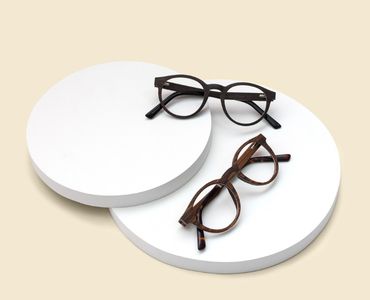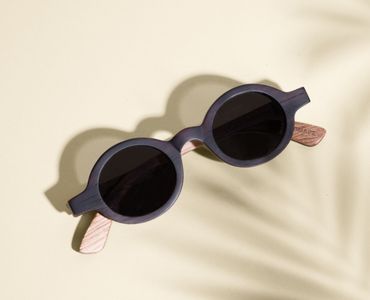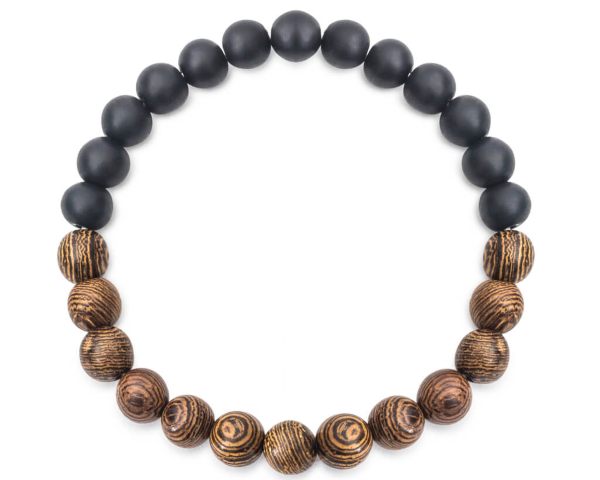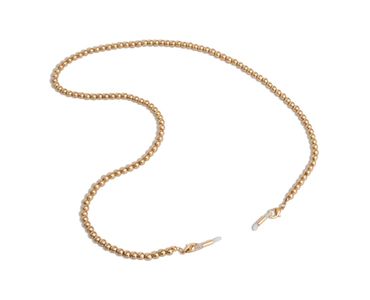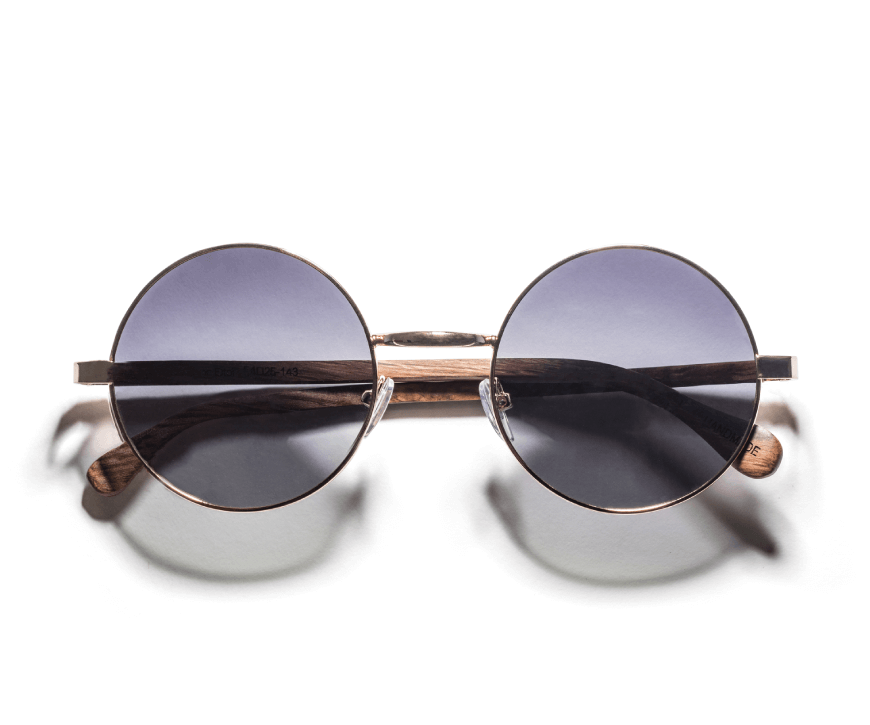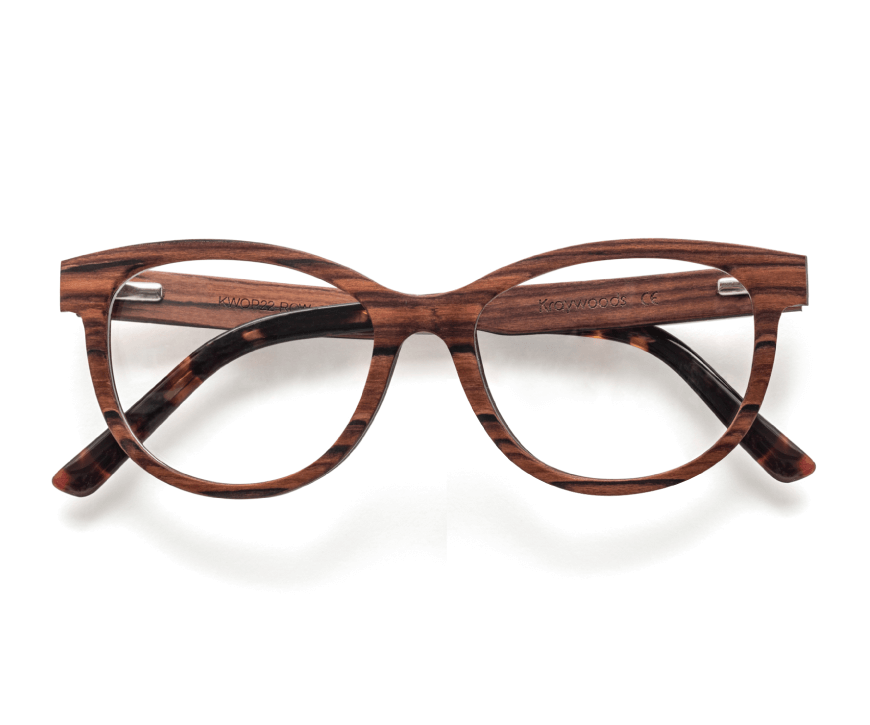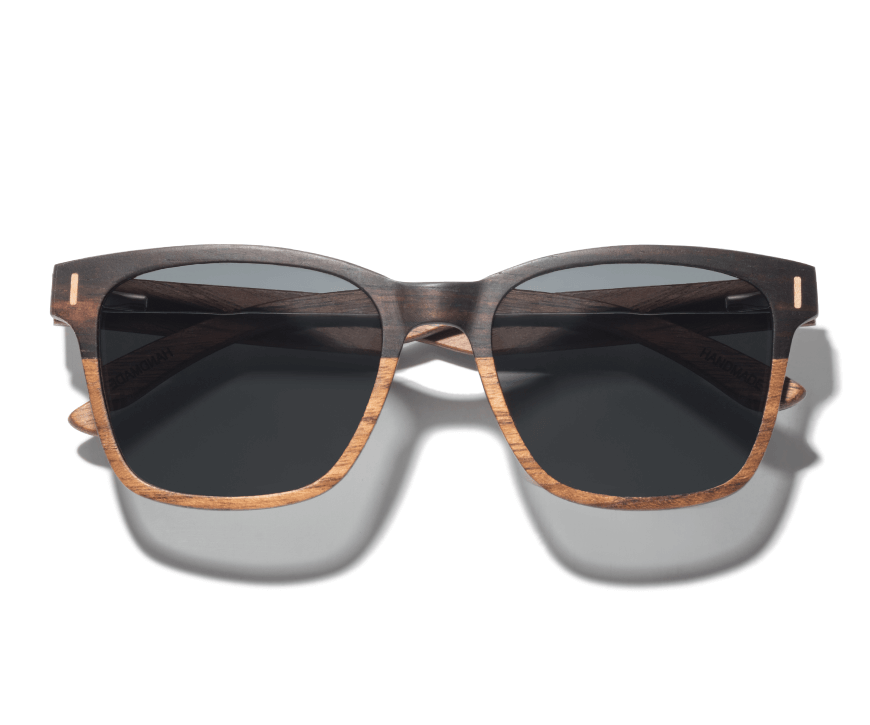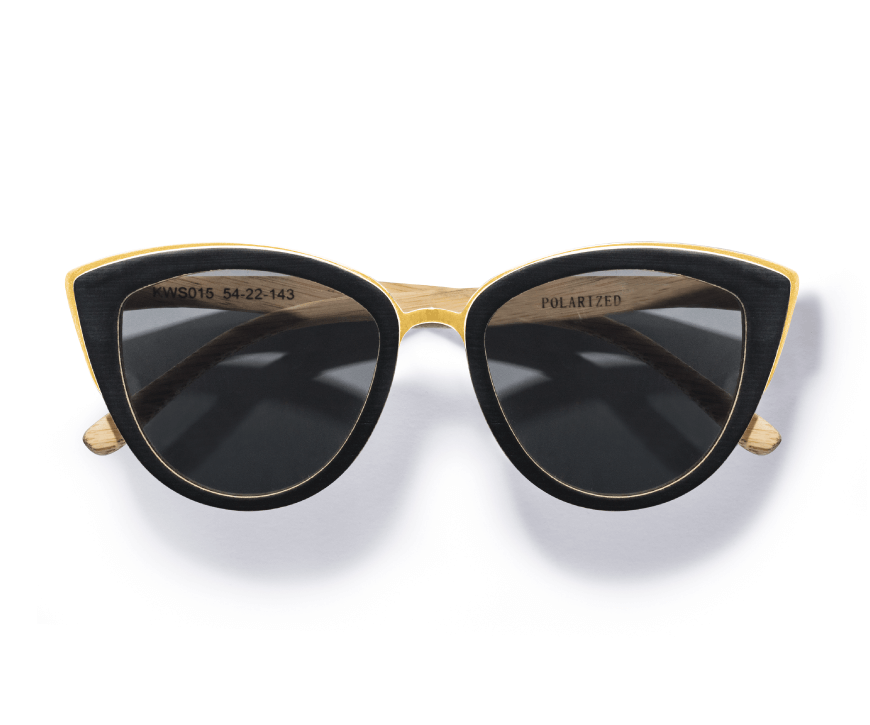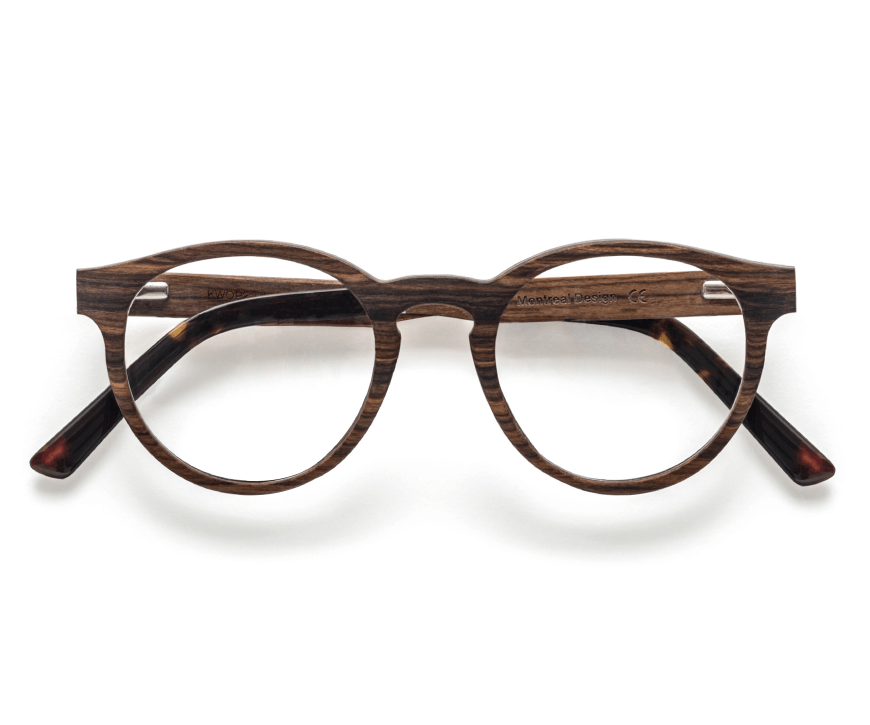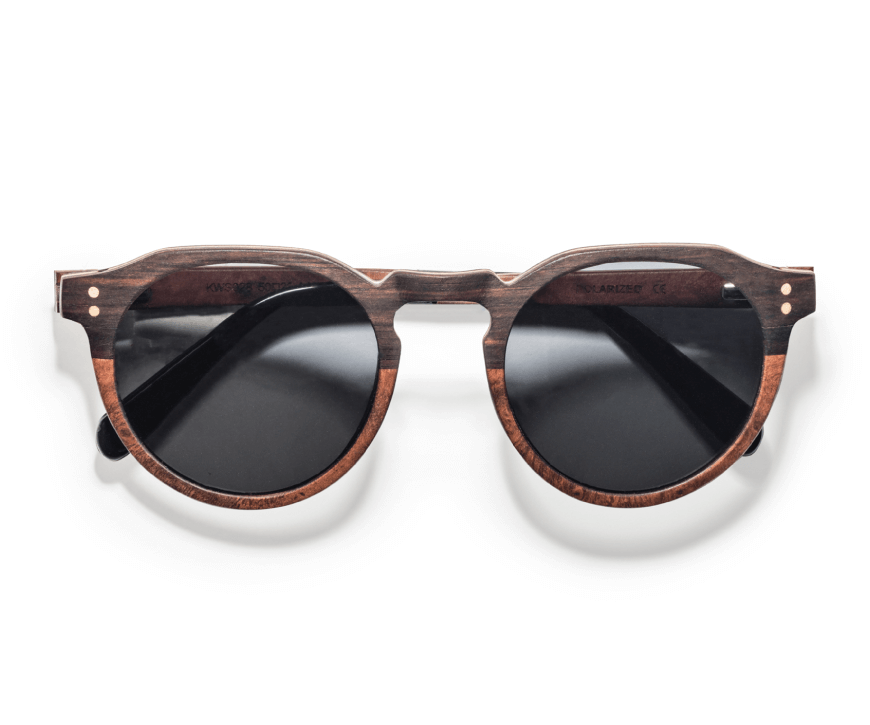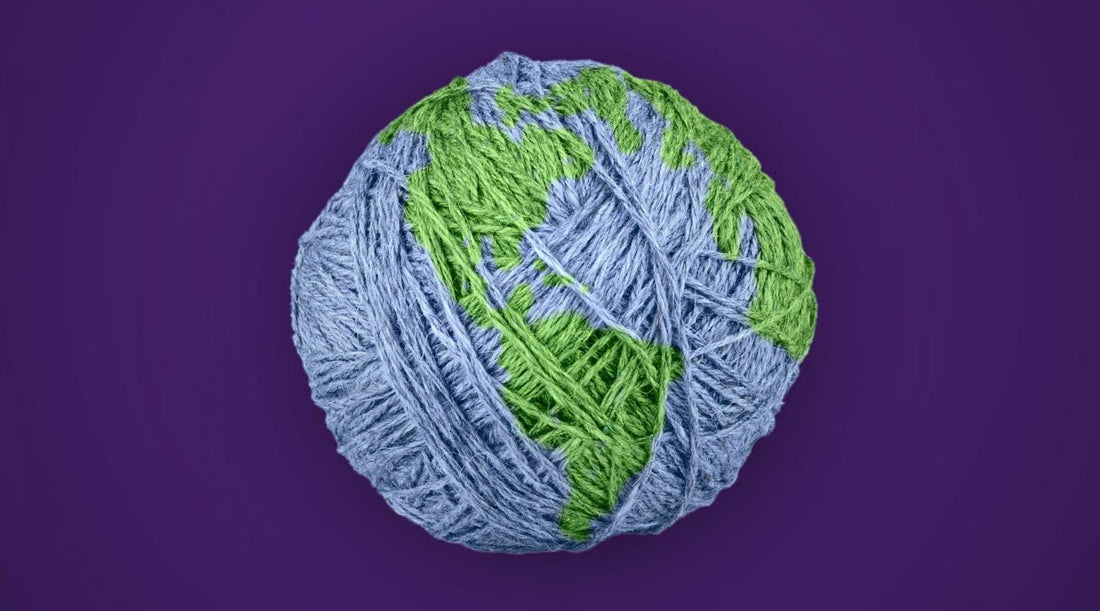
How Does Sustainable Fashion Help The Environment
• Updated on 3 October 2022 • Chelsea from Kraywoods
Are you familiar with the term "sustainable fashion"? Get ready, because you're about to hear a lot more about it! As we face urgent environmental challenges like climate change, deforestation, and plastic pollution, it's time to start thinking about how the fashion industry can help. Unfortunately, fast fashion has had a devastating impact on people and the planet, contributing to everything from biodiversity loss to water scarcity. It's time to turn things around with sustainable fashion!
So, how come most brands are moving to sustainability? The positive thing about going greener is the ability of universally addressing these environmental and ethical issues. Fashion, including wooden sunglasses and wood frame eyeglasses, is all about self-expression. What better way to make an immense environmental impact than by wearing sustainable clothes made by sustainable brands? You can be part of the positive change we have been looking for in our communities and around the world. This is our guide to you:
- What is Sustainable Fashion?
- Why Sustainable Fashion Matters?
- The Effects of Fast Fashion
- How Does Sustainable Fashion Help The Environment?
- How To Support The Sustainable Fashion Movement
1. What is Sustainable Fashion?
How often are you hearing the term sustainability? We bet not as much as you should be, especially within the fashion industry. Sustainable fashion, also known as slow fashion, refers to garments and accessories made from eco-friendly materials and produced in an ethical manner. In other words, it's being environmentally and socially responsible, conscious and accountable for every piece of fashion product released into the world.
In the fashion industry, there is a vast comparison in products created a decade ago VS today. Sustainable fashion brands are making their fashion items with environmental friendliness in mind. They use all-natural and organic fabrics like cotton, wool, silk, bamboo and cashmere. Do you see any harmful impact to the environment and nature caused by the use of these materials? Textile recycling experts are answering that with a NO!
With a great turn of events, sustainable fashion has become a necessity and a trend. To this day, fashion brands tend to reduce their carbon footprint and any other environmental issue starting from point of production to the ending point of selling to the consumers. Do you know what's great? Awareness for sustainability is following. People are becoming eco-conscious with their purchasing and the type of clothes they buy. The ultimate target is to have a system that works without any adverse effects on the planet.
2. Why Sustainable Fashion Matters?
Fast fashion has always been one of the biggest culprits in the industry. To meet demands for new styles and trends, clothes along with high fashion dupes are cheaply made. Let's consider this process of making a shirt as an example: A cotton t-shirt is to be sold at a competitive price. The cotton gets picked, spinned, weaved, dyed then finally sewn and finished.
Can you imagine how many workers it takes to pull off the job? At some point, a child can be among the workers, being in an unsafe environment and paid a non-livable wage. In order for fast fashion to sell you this cotton t-shirt at the lowest price, they have to pay an extremely low cost to make it. Now, answer us: Why does sustainable fashion matters and why isn't sustainable fashion more affordable?
Shopping green and understanding the origins of every product you purchase is essential. Slow fashion emphasizes not only the materials used but also the process of creating the final product. This approach has given rise to the concept of "Traceability," which enables consumers to learn more about their clothing. Sustainable fashion has contributed to the advancement of ethical trade and labor laws. Through the implementation of the Fair-Trade Act, companies are held accountable for providing fair, safe, and ethical working conditions during manufacturing, as well as investing in the protection and well-being of their employees.
Watch Below: The True Cost of Fast Fashion | The Economist
3. The Effects of Fast Fashion
You've heard us use this term a lot, fast fashion. Sure its name can give you a hint. But, allows us to explain what it actually means. Fast Fashion is a term used to refer to inexpensive clothing produced rapidly by retailers in response to the latest trends. Most of the time, people look for the well-known brands to keep up with the latest styles and fashionable trends by purchasing products at a reasonable price. As a result, consumers just buy whatever they want without paying attention to what they're wearing, where was it made and how was it made.
Therefore, everything comes with a price. Let's look at some numbers:
- Studies show 150,000,000,000 pieces of clothing are made each year.
- Used clothing thrown in landfills end up to be around 2500,000,000 pounds each year.
- The textile industry produced 2,100,000 tons of CO2 emissions.
- One t-shirt needs 700 gallons of water to produce.
- The fashion industry is responsible for 10% of the world's total carbon footprint.
- Approximately 76% of companies don't know they type of fabric that was woven, knit or dyed.
- 93% of companies don't know the origins of the raw materials used in cloth-making.
Hasn't there been enough damage? The excessive use of water consumption, negative carbon footprint and use of harmful chemicals and materials continue to this day. With that being said, consumers are becoming more aware and informed of the future effects. Both fashion brands and buyers are evolving and paying more attention to the tiniest details in terms of origin of materials and the quality of eco-friendly clothes.
4. How Does Sustainable Fashion Help The Environment?
Sustainable fashion is growing at a steady pace with the rise of consumer awareness. Every action counts and its never too late to join the party! Explore the world of ethical fashionable alternatives. For your next shopping haul, aim for better quality and long-lasting pieces.
If you don't know where to look, you can always check your favorite influencers or ethical fashion blogs that bring you only the best! We recommend checking out our friends: Fox & Bloom, Conscious Life& Style, My Green Closet and Ethical Unicorn. Haven't changed your mind yet? Look at how this trend can change the environment.
1. Sustainable Fashion Saves Natural Resources
Research from 2020 shows that 97% of what goes for making clothes are new resources, with only 3% of these recycled materials. This adds up to an annual supply input of 98 million tons. It includes oil to produce synthetic fibres, fertilizers to make cotton and a limitless list of chemicals required to dye & finish fabric.
It has been proven that recycled fibres are a much more sustainable option because they lessen pressure on virgin resources and tackle growing problems of the waste management system. As a reference, for swimwear, every 10,000 tons of ECONYL® raw materials are used. Also, 70,000 Barrels of Oil & 57,100 tons of Co2 are being saved compared to the manufacture of virgin nylon.
2. Sustainable Fashion Helps Reduce Carbon Footprint
The global fashion industry emits a substantial amount of greenhouse gases yearly, which negatively impacts global warming. The reason is that the majority portions of our clothes are petroleum-based, and they are made from fossil fuels as well. We know you'll be surprised when you eventually check the label off your clothes. In the production phase, these materials need much more energy than recycled or natural fibres.
Additionally, ethical fashion brands use sustainable materials made from recycled or natural fabrics. They need comparatively less to no chemical treatment, less energy, less water, or no pesticides or fertilizer to grow. How about that for saving the environment?
3. Sustainable Fashion Saves Animal Life
The fashion industry is guilty of killing animals for fashion to get materials like fur. There is an estimation that the leather industry around the world itself is killing over 430 million animals each year.
In recent years, consumers have become more conscious about the importance of boycotting the use of such materials in clothing. But it continues to be used by high-end fashion designers as a luxurious material.
Sustainable brands around the world have started to encourage the use of cruelty-free substitutes. There is one for approximately every material used in fast fashion. You can find polyester made with waste from the oceans, bags created from recycled seatbelts, sneakers made from plant-based compostable, silk created from mushrooms, and bio-fabricated veggie wool.
Finally, one of the most needed leather substitutes these days comes from, are you ready? Pineapples!! The leaves of pineapples are used for production during the harvesting process.
4. Sustainable Fashion Requires Less Water
Water is not only the primary source in the world, but in the fashion industry too! Water has been used for the dyeing and finishing process of our clothes. To make a single T-shirt, it requires 2,700 litres of water, especially cotton that is highly dependent on water. But, they grow in hot and dry areas where water is not found frequently.
Moreover, organic cotton helps in reducing water consumption by 91%, contrasting to conventional cotton. Only 1 % of global cotton production is organic due to the high cost of non-GMO seeds. Also, organic cotton sometimes requires extra investment in machinery and materials, which farmers use only for growing organic crops.
5. Sustainable Fashion Ensures Safe Working Conditions
Believe it or not, contemporary slavery does exist. From Minimum wages, endless working hours, intolerable health and safety conditions to the prohibition of workers unions, these are the truth and reality for most of the garment workers in the fast fashion industry. Not to mention verbal and physical exploitation is still a common practice in this industry.
Eco-ethical brands are working to provide caring and humane working conditions, fair wages, and health care for their workers, which are usually above average. Commonly, they show a higher purpose towards creating economic and financial opportunities for those in need to reduce poverty. We all want to make sure we look good, but that should also include feeling good about how our clothes are made, and who actually makes them.
6. Sustainable Fashion is Healthy for The People & The Planet
Fashion items regularly undergo a long and extreme chemical process before ending up in our closet. About 8,000 different synthetic substances are used to bleach, dye, and wet process garments. Those chemicals sometimes cause diseases or even deaths of workers and impose severe congenital disabilities for their children. So, when we consider these harmful effects of chemicals, we must go for sustainable fashion, which is healthier for us, the planet and cruelty-free.
7. Sustainable Fashion Doesn't Encourage Child Labor
As per recent statistics of UNICEF, OVER 170 million children are involved with garment work. And it defines as "work for which the child is either too young – work is done below the required minimum age – or work which, because of its detrimental nature or conditions, is altogether considered unacceptable for children and is prohibited." In modern days, we call this slavery!
Brands who genuinely follow ethical and sustainable practices are transparent about child labor. They provide detailed information about the production process, working conditions, etc. to check the ethical factors of a fashion brand or garments with certification labels like – Fair Trade Certified, Fair Wear Foundation, Ethical Trading Initiatives, etc.
These organizations help to protect the rights of the garment workers globally and ensure that no child labor occurs. In addition to these, they also ensure that no workers are paid fairly for their job and sometimes above present market rates and work in a safe environment.
5. How To Support The Sustainable Fashion Movement
1. Purchase From Sustainable Fashion Brands
In order to grasp the actual ecological implications of the fast fashion industry on our planet, it is essential to first comprehend several key factors. As both companies and consumers become increasingly aware of the environmental impact of the materials used in clothing production, there is a rising demand for eco-friendly manufacturing methods and sustainable, organic textiles.
The goal of sustainable fashion brands is to replace harmful materials and chemicals with environmentally friendly options, while also taking into account the entire life cycle of a garment, as well as the associated supply chain. This approach seeks to minimize the environmental impact of clothing production by promoting the use of sustainable materials and responsible manufacturing practices.
Just look at wooden sunglasses, they're gaining popularity because onsumers are loving the background story. All polarized sunglasses or prescription eyeglasses are handcrafted from premium materials such as sourced wood and recycled materials.
For example, the Ralph Sunglasses are handcrafted from layered Ebony Wood and dark grey polarized lenses. They're the perfect piece to create a simple, versatile, and irresistibly retro look.
If you're a consumer interested in sustainable fashion, it's important to be well-informed about the origins and "traceability" of the clothes you purchase from sustainable fashion brands. Consider investing in long-lasting and versatile pieces, such as wooden sunglasses, and also explore options like clothes swapping or secondhand buying to help keep garments from ending up in landfills. Each and every step in sustainable fashion has an immense positive environmental impact on our planet.
2. Learn To Love Your Clothes Again
The five R's of Fashion is what we should all be thriving to accomplish. Sustainable fashion requires buying ethical clothes and thinking green in fashion consumerism. As a result, you allow every piece of clothing to have a longer life. You can start from your own closet! Dig out an old pair of jeans and style it in a new way! You might be surprised with the outcome.
Each time you choose to avoid going on a shopping spree, you would be contributing to sustainable fashion and making a positive impact on this planet. You can teach your friends to love the planet by gifting them sustainable items! But, for now think green, buy green and wear green!
3. Use Sustainable Accessories
Modern fashion is not just about following the latest trends and styles. It's also about becoming aware of the originality of things you are purchasing. With the large impact of sustainable fashion, designers decided to kick it up a notch by creating sustainable accessories too! Beaded bracelets are great for men and women's fashion. They are perfect for every occasion and go well with whatever you decide to put on. You can shop unique beaded and macrame bracelets crafted from authentic wood and stone beads.
Better yet, if you're looking to update your eyewear collection, make sure you add the latest jewelry trend to the list too. Glasses chains are the real deal. They help make your wooden sunglasses even cooler. String chains come in various textures, colours and patterns too. Shop from the unique selection and create the most fashionable look.
There are many ways to incorporate sustainable actions into your lifestyle. It all starts with small steps that grow into habits. You can go for eco-friendly products to reduce plastic waste or even start recycling in your non-reusable products.
Sustainable fashion grew into a big industry not only because it is stylish but also for a good cause. So jump into the movement and become eco-friendly. Why not look stylish as well as planet conscious?


